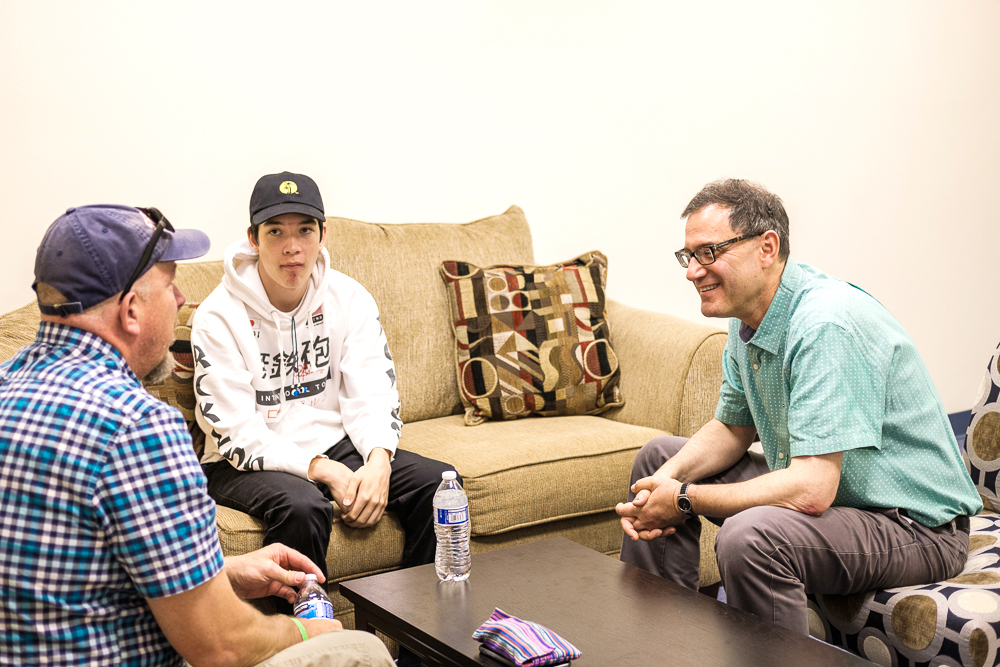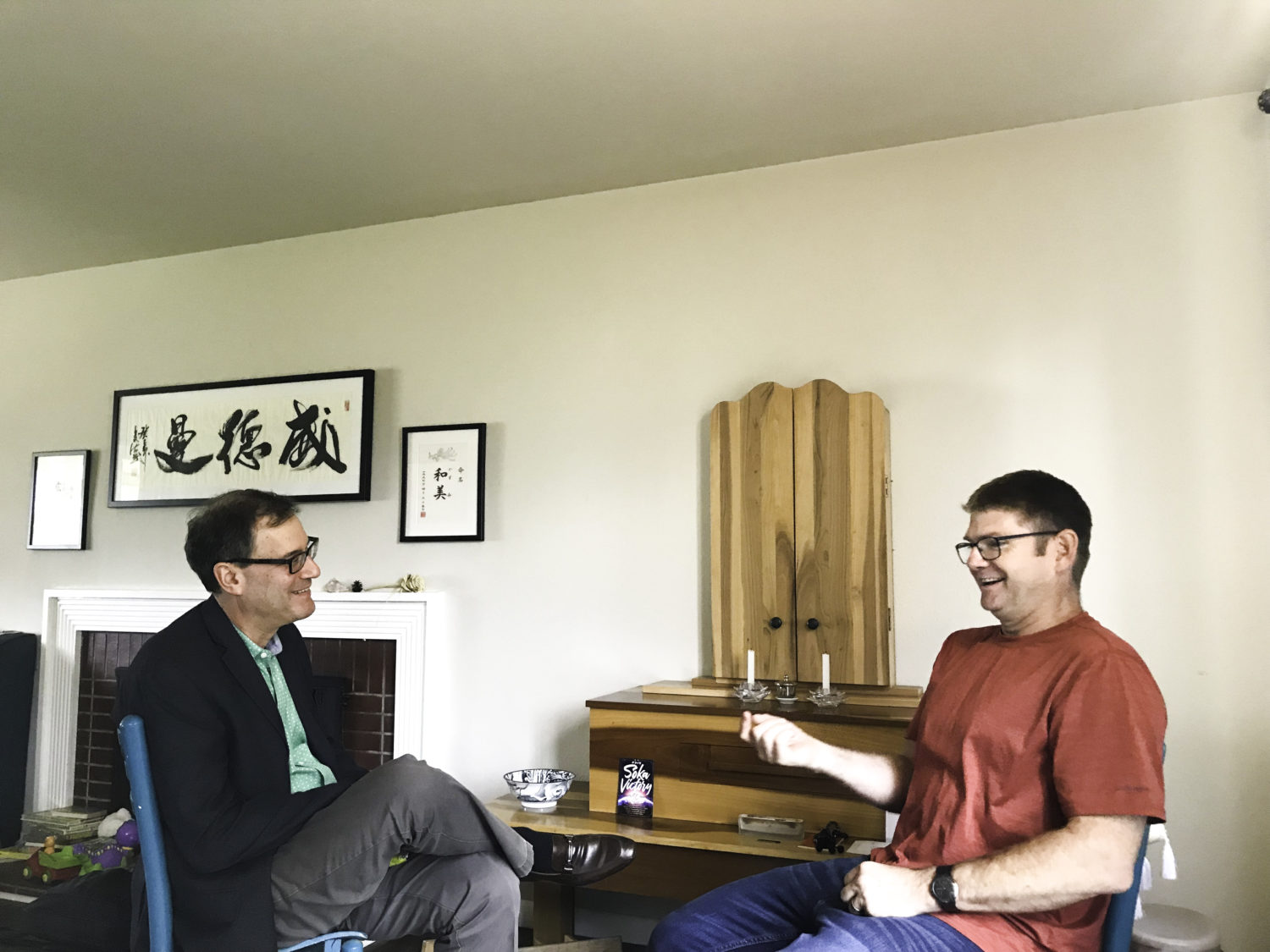With “home visits” and “personal encouragement” as the bywords for the SGI-USA in 2019, this World Tribune series features SGI-USA leaders who discuss their personal experiences of being home visited, home visiting others and the lessons they’ve learned.
by Adin Strauss
SGI-USA General Director
Recently, I visited a member who has been facing severe career challenges. I had spoken to him on the phone a number of times and could tell his spirits were lagging. So I went to meet him face to face. When we got together, the first thing we did was chant Nam-myoho-renge-kyo. Then, I listened to him share his struggles, and together we studied specific guidance from The Writings of Nichiren Daishonin and SGI President Ikeda pertaining to his situation. We discussed numerous examples of how President Ikeda transformed his difficulties using faith.
While on the visit, I was also able to meet this member’s spouse and express my gratitude for her support. After chanting and speaking together, the member became more positive. And as I spent time with them and learned the reality of their lives, I left convinced that the member, with the determination and support of his wife, would definitely win.
Q: What is the most important thing to keep in mind when doing home visits?
The most important thing is to listen and be totally focused on the person while you’re with them. Because we’re human, it’s easy to go into a mindset of: This is the person’s problem, and this is my solution. In order to avoid this, we have to listen carefully and hear what’s actually going on in their lives.
It’s also crucial to be polite and gracious to the people supporting the person you’re visiting. It could be their partner, or their roommate, for example. Even if the roommate is playing video games in the living room when you enter the home, you should still thank them! And if a member’s partner does not practice, we should really thank them. In The New Human Revolution, President Ikeda is always demonstrating appreciation for people who are not practicing; his spirit is to express care equally for everyone.
Q: How did you learn the Soka Gakkai spirit to treasure the person in front of you?
I learned it from how I was encouraged in the beginning of my practice. I was stubborn and headstrong at the time, so it took a team of six or seven people to help me to start and then continue practicing. I felt they really cared for me.

President Ikeda writes, “The human warmth of a senior’s sincerity and care for each individual is what raises capable people and provides them with nourishment in faith” (The New Human Revolution, vol. 26, p. 271).
While I don’t remember any Buddhist concepts from the first eight months of my practice, I remember the camaraderie and care the members showed me.
Q: What are three things you keep in mind as you prepare for home visits?
- I chant Nam-myoho-renge-kyo before the visit to be able to move the heart of the person and advance kosen-rufu through my encounter with them.
- I get in touch beforehand to make sure all of the details of the visit are solidified.
- I try to go together with another person who can support in the follow-up and consistent care of the member I am visiting.
Q: How do you encourage a member who is really struggling?
While there are many different varieties of “I’m struggling,” I always try to direct people to the Gohonzon, Nichiren Daishonin’s writings and President Ikeda’s guidance. However, if that person’s life state isn’t open, regardless of what I share, it may not penetrate their lives.
So, first, I ask that we chant Nam-myoho-renge-kyo together. I look at the condition of their altar and how they are chanting. Are they chanting with focus and conviction? Or are they getting up, walking around or checking their phone while chanting? I do not hesitate to point out things I notice, if I feel it will help them break through.
And when I do share, I do so with conviction. The most important thing is to share with conviction based on our own experiences in faith. The conviction we share will give them confidence that they can win.
Q: What is the goal of home visits? What makes them victorious?
A home visit is victorious if the person is genuinely encouraged. Something concrete should come out of the home visit. For example, if during the visit, the member has decided to challenge chanting an hour in the morning, that is a concrete takeaway. The person, of course, must set that goal him or herself. With that in mind, I chant powerfully for them afterward, and follow up to find out how they have progressed, and ensure they are nourished in faith.
President Ikeda writes: “One ripple can produce countless others. In this way, the ripple created by your efforts to visit one member and engage sincerely with them will give rise to untold more” (March 2017 Living Buddhism, p. 33).
Recently, I met with a young woman. Together, we visited another young woman, and the three of us determined to visit yet another. Each person we met with opened the way for heartfelt dialogue with one more person. In the end, we each felt empowered to overcome our hardships and work for the happiness of others.
I learned that the starting point is always caring for a single person. Just as Nichiren Daishonin states, “One is the mother of ten thousand” (“A Sage and an Unenlightened Man,” The Writings of Nichiren Daishonin, vol. 1, p. 131), encouraging one person truly is encouraging countless others.
You are reading {{ meterCount }} of {{ meterMax }} free premium articles

